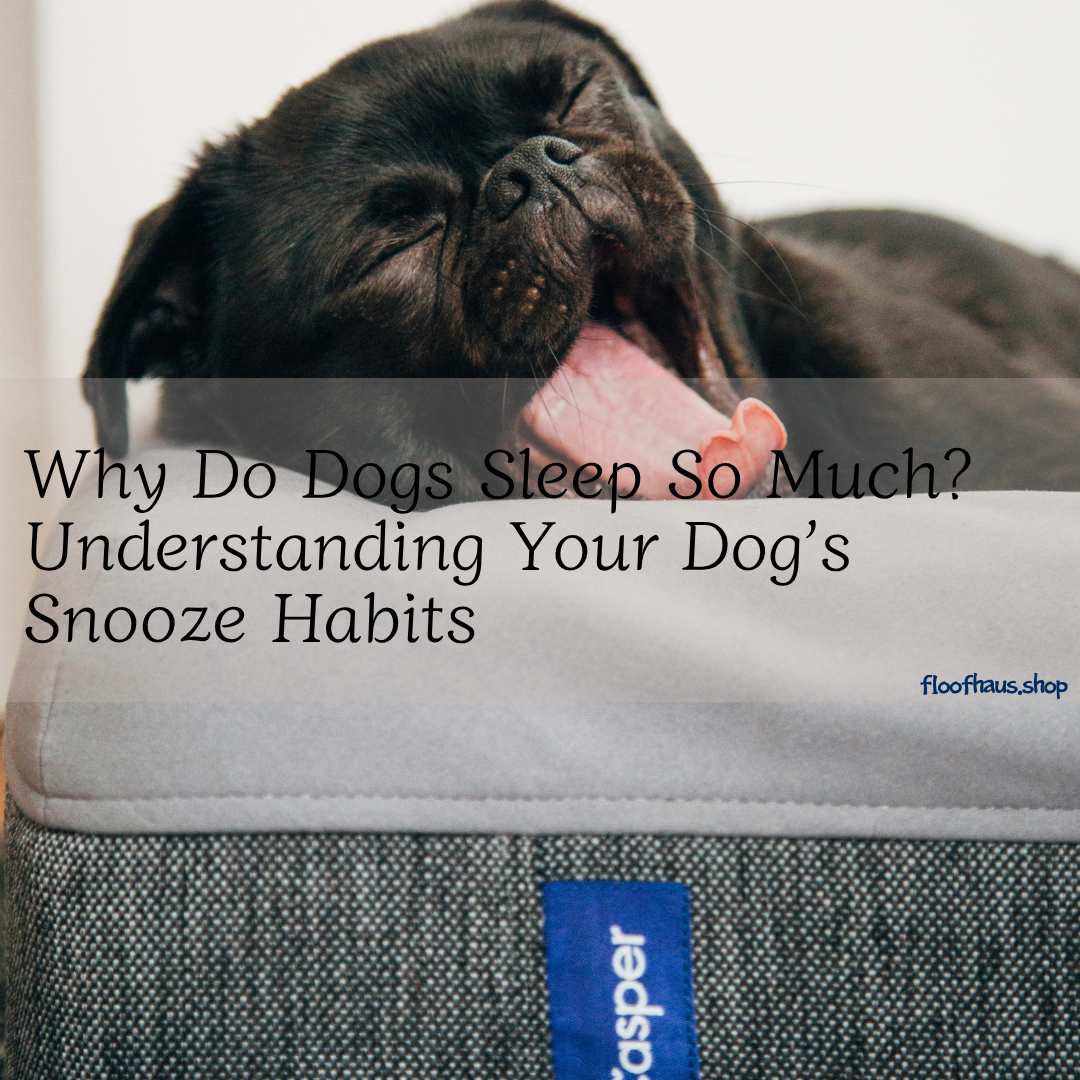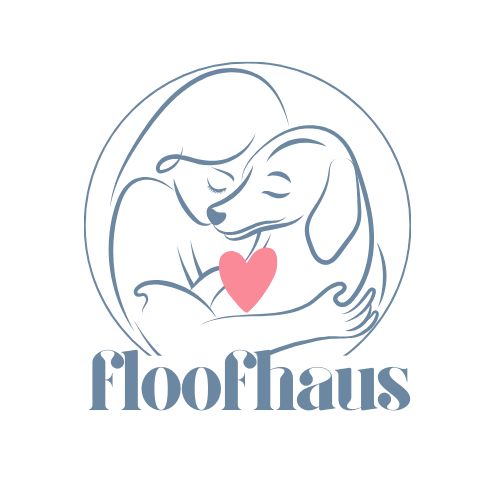
Why Do Dogs Sleep So Much? Understanding Your Dog’s Snooze Habits
Share

Dogs seem to spend half their lives asleep — but is that normal? Understanding dog sleep habits helps you care for your pet better. Let’s uncover how much rest dogs need, what affects their sleep, and how to keep them healthy and well-rested.
1. How much sleep do dogs need?
Dogs sleep far more than humans. Adult dogs usually rest between 12 and 14 hours daily. Puppies and senior dogs need even more rest — sometimes 18 hours a day.
The reason lies in dog sleep habits. Unlike humans, dogs are polyphasic sleepers. They nap several times throughout the day rather than getting one long stretch of sleep at night. This pattern allows them to stay alert, respond quickly, and recover energy.
Their sleep has two key stages:
- Non-REM sleep, when their bodies rest and recover
- REM sleep, when they dream and process daily experiences
If your dog’s paws twitch or they make soft noises while sleeping, they’re likely dreaming.
2. Why sleep is essential for dogs
Good sleep supports your dog’s growth, learning, and emotional balance. Puppies process new experiences while sleeping, strengthening their training memory. Adult dogs recover from physical activity, and older dogs ease joint pain through rest.
Sleep also regulates hormones and immunity. Just like humans, dogs can get cranky or stressed when overtired. Regular, uninterrupted rest keeps them calm, focused, and healthy.
3. What affects dog sleep habits?
Several factors influence how much and how well dogs sleep.
Age: Puppies need more rest for growth, while older dogs require extra naps for recovery.
Breed: Large breeds like Great Danes or Mastiffs sleep longer than small, high-energy breeds such as Terriers.
Activity level: Active dogs or working breeds sleep deeply but less frequently. Indoor, less-active dogs may nap more often.
Environment: Noise, temperature, and lighting affect rest. A quiet, cool, dark spot helps dogs relax.
Diet and health: Poor nutrition or medical conditions can change sleep patterns. Balanced meals improve energy and sleep quality.
4. When extra sleep might be a red flag
While dogs naturally sleep a lot, excessive sleep can signal trouble. If your dog suddenly sleeps far more than usual, observe closely.
Lethargy, appetite loss, or breathing issues alongside long naps could indicate illness. Endocrine disorders, infections, or pain may cause fatigue.
Older dogs might oversleep due to arthritis or cognitive decline. Always watch for behavioral changes that accompany altered sleep. When in doubt, consult your vet.
5. The link between exercise and sleep
Activity directly shapes dog sleep habits. A dog who plays, trains, or walks regularly will rest better. Physical and mental exercise burn energy and promote relaxation.
Without stimulation, dogs may oversleep from boredom. Short daily walks, interactive play, and training sessions improve their overall rest.
Consistency is key. Set a daily schedule for meals, walks, and bedtime. Predictable routines make dogs feel secure and help regulate sleep cycles.
6. Creating the perfect sleep environment
Just like humans, dogs thrive on comfort and routine. To encourage healthy dog sleep habits, try:
- Consistent bedtime: Set a routine so your dog knows when it’s time to rest.
- Comfortable bedding: A cozy, supportive bed reduces joint pain and helps older dogs rest better.
- Temperature control: Keep the space cool, quiet, and dark.
- Exercise: Adequate daily activity helps dogs fall asleep faster and sleep longer.
If your dog shares your bed, that’s perfectly fine — as long as it doesn’t disrupt your or their sleep quality.
7. Do dogs dream?
Yes! Dogs dream just like people do. During REM sleep, their brains replay daily experiences. You might see paw movements, ear flicks, or gentle barks.
Scientists believe these dream behaviors mirror real-life events — running, playing, or chasing toys.
Smaller dogs dream more frequently but for shorter periods. Larger breeds dream less often but for longer stretches.
Dreaming supports emotional balance and memory, just another reason why quality rest matters.
8. How age changes dog sleep habits
Puppies are like babies — they play hard and crash often. Their sleep fuels growth and learning. You might notice bursts of energy followed by long naps.
Adult dogs develop more stable routines, resting mainly after meals or activities.
Senior dogs often nap longer during the day and may wake at night. Aging brains and muscles recover slower, so they need gentler schedules.
Adjust your dog’s exercise intensity and feeding times as they age. Respecting these changes keeps them comfortable.
9. How health affects sleep
Dogs with health issues often show changes in sleep patterns. For example, pain from arthritis may cause restlessness. Respiratory problems can lead to snoring or interrupted sleep.
Obesity, thyroid issues, or poor diet can make dogs sluggish. If your dog seems tired despite enough rest, ask your vet about blood tests.
A balanced lifestyle — including exercise, hydration, and nutritious meals — supports quality sleep.
10. Recognizing normal vs. abnormal sleep
Every dog’s rhythm is unique, but it helps to know what’s typical.
Normal: Regular naps, relaxed posture, steady breathing, easy wakefulness.
Abnormal: Difficulty waking, loud snoring, sudden fatigue, or constant restlessness.
If you track your dog’s sleep and see drastic shifts, document them for your vet. Early detection helps prevent underlying issues.
11. How to improve your dog’s rest
Here are simple ways to boost sleep quality:
- Keep the room quiet and dim at night.
- Stick to consistent feeding and walking times.
- Provide a comfortable bed with proper support.
- Avoid overstimulation before bedtime.
- Offer mental enrichment during the day to balance energy levels.
Routine, comfort, and calmness are the pillars of good canine sleep.
12. How Floofhaus supports your dog’s sleep
At Floofhaus, we believe rest is just as important as play. Every nap matters for your dog’s health and happiness.
We design cozy, durable beds that adapt to your dog’s sleeping style. Our orthopedic options relieve pressure on joints, while plush loungers cradle smaller breeds.
Our calming blankets and chew toys help anxious pets relax faster. Each product supports peaceful downtime and promotes overall wellness.
Floofhaus isn’t just about comfort — it’s about care. Because a well-rested pup means a happier home.
13. When to consult your vet
Reach out to your vet if your dog:
- Sleeps over 20 hours daily
- Struggles to wake up
- Suddenly changes sleeping spots
- Refuses walks or meals
- Snores excessively or breathes heavily
Your vet can check for hormonal imbalances, heart issues, or chronic fatigue. Professional advice ensures peace of mind.
14. The takeaway
Understanding dog sleep habits helps you build a healthier daily routine. Dogs sleep a lot because they need rest to grow, heal, and feel secure.
Balance activity, diet, and environment to promote quality rest. Watch for changes that might suggest health concerns.
With love, structure, and the right sleeping setup, your pup can enjoy the deep, restorative rest they deserve.
Sources:
- American Kennel Club – “How Much Do Dogs Sleep?”
- PetMD – “Understanding Your Dog’s Sleep Patterns”
- VCA Animal Hospitals – “Normal Dog Sleeping Behavior”
